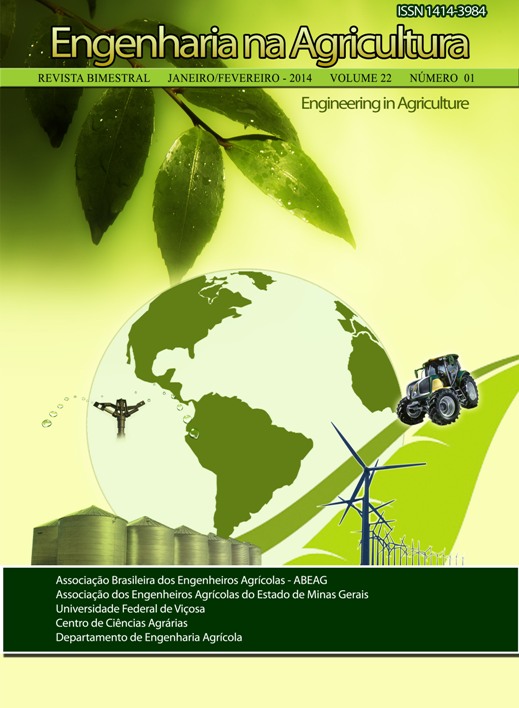EFFICIENCY OF TERMO-REFLECTIVE SCREENS AND SHADING IN PROTECTED ENVIRONMENTAL SUBMITTED TO HIGH TEMPERATURES - DOI: 10.13083/1414-3984.v22n01a04
DOI:
https://doi.org/10.13083/reveng.v22i1.362Keywords:
condições climáticas, cultivo protegido, épocas de cultivo, horticultura tropicalAbstract
Cultivation in protected environments allows for crop production in seasons that normally would not be suitable for open field production. This study sought to evaluate the variations in luminosity, air and soil temperature and relative humidity of the air in different environmental conditions during the winter and summer, in Cáceres-MT, using screens with mesh of 30, 40 and 50% shading, thermo-reflective screens with 30, 40 and 50% shading and an open field. The experimental design utilized consisted of randomized blocks with 10 replications, represented by 10 days of collection. It was observed that the screened environments reduced the minimum, average and maximum values of the luminosity and air temperature attributes, and resulted in an increase in relative humidity compared to the open field environment. The black screens with 40% and 50% shading and the 50% thermo-reflective screen presented greatest efficiency to reduce luminosity and air temperature. The screen with 50% shading was that which resulted in the greatest indices of relative humidity of the air among the treatments.Downloads
Downloads
Published
How to Cite
Issue
Section
License
Authors who publish with this journal agree to the following terms:
The author(s) authorize(s) the publication of the text in the journal;
The author(s) ensure(s) that the contribution is original and unpublished and that it is not in the process of evaluation by another journal;
The journal is not responsible for the views, ideas and concepts presented in articles, and these are the sole responsibility of the author(s);
The publishers reserve the right to make textual adjustments and adapt texts to meet with publication standards.
From submission, the author is fully conceding the paper's patrimonial rights to the publication, but retaining the owner of its moral rights (authorship and paper's identification) according to Creative Commons Attribution-Noncommercial.








 Licensed by
Licensed by 